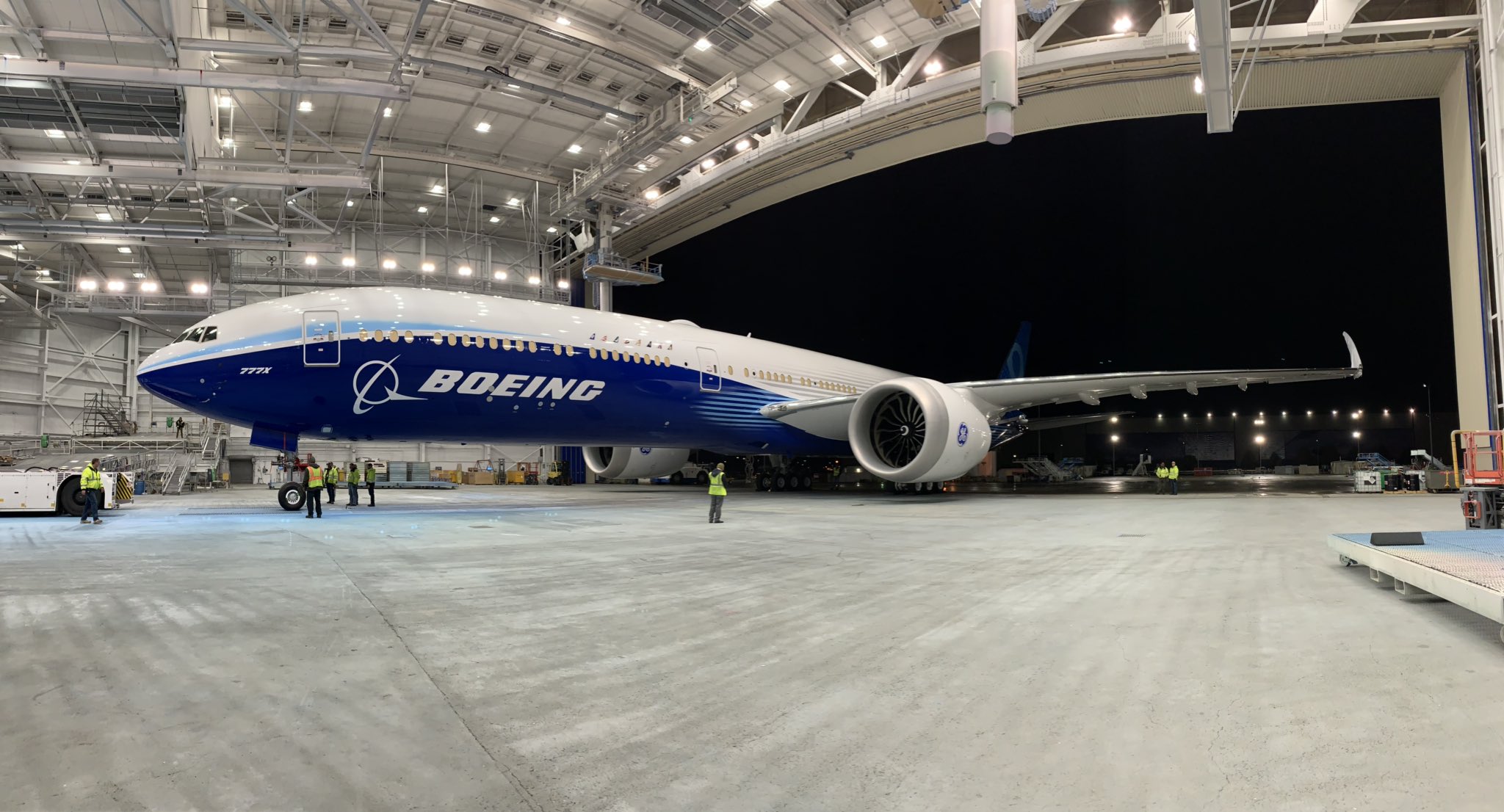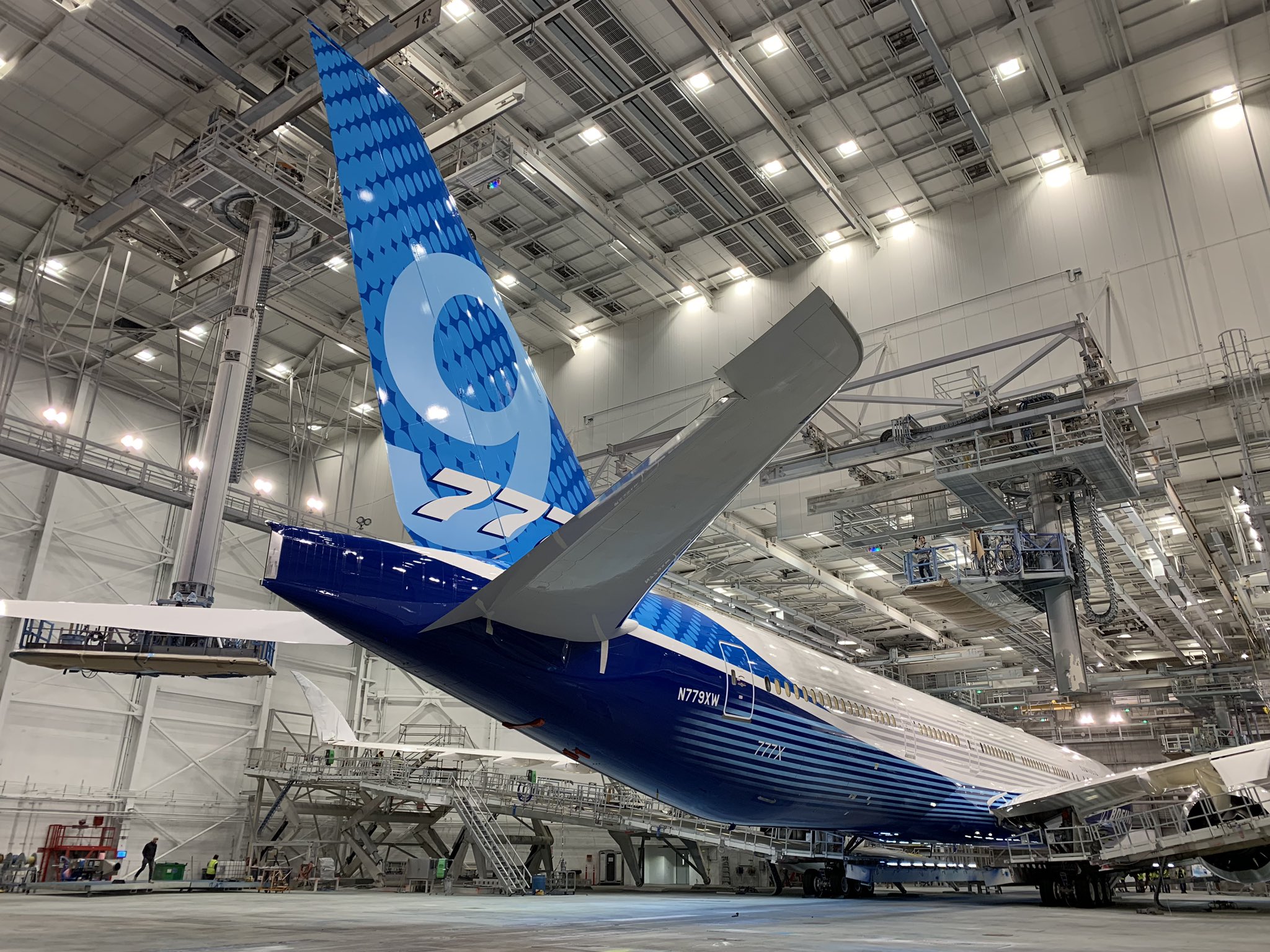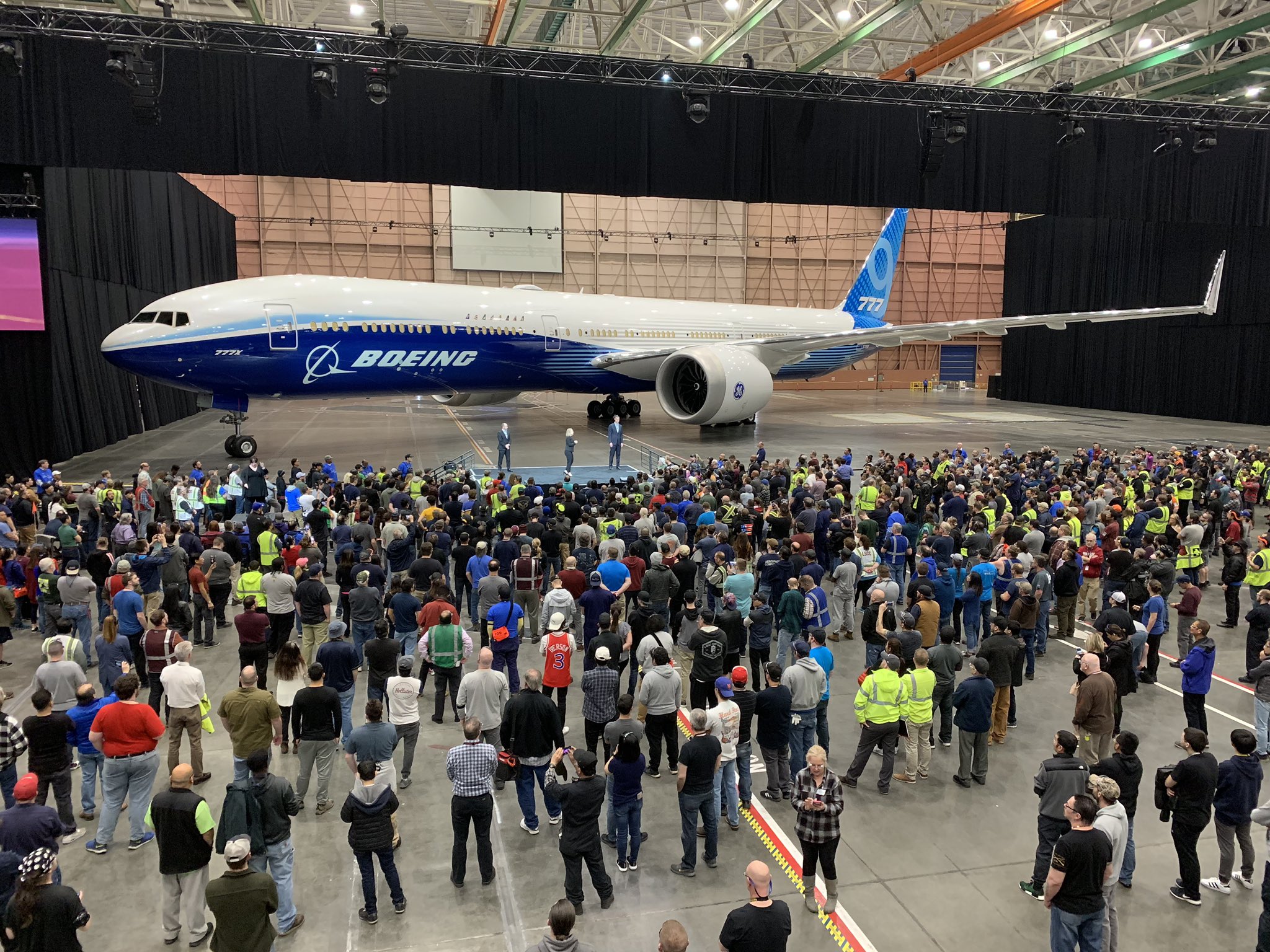The mojo of unveiling the newest aircraft from the Boeing stable, the 777X was taken away by the unfortunate incident relating to the Ethiopian Airlines 737 MAX 8 over the weekend. Boeing had planned an employee unveiling of the aircraft on March 13, 2019, and an event with the global media on March 14, 2019.
The newest Boeing aircraft, which would even be the biggest twin-engine jet from the Boeing stable, was revealed to Boeing’s Washington-based employees yesterday night India time in a sobering ceremony, while the media event for the reveal has been postponed for the moment.
Here is a look at the massive engines the GE9X, which will be the sole engine supplier for the Boeing 777X
And here is a look at the foldable wing. The 777X will be the first aircraft in the world to have a foldable wing, although for the test aircraft, they will be locked in this folded position for good.
The Boeing 777-9 is the longest aircraft in the world and should be able to fly 400 people and fly them 7,600 nautical miles. It will enter service next year. The second and smaller family member, the 777-8, will be constructed a couple of years after the 777-9 enters service. The 777-8 will be able to fly about 8,690 nautical miles with about 365 passengers on board, and will eventually succeed the Boeing 777-200LR.
The 777X test aircraft, registered N779XW, will be now proceeding for ground tests, before taking to the skies for rigorous testing.
Boeing already has an order book of 358 777X aircraft. Emirates, Lufthansa, ANA, Cathay Pacific, Etihad, Qatar Airways, Singapore Airlines and British Airways are all waiting up to induct the 777X in their fleets.
Here is hoping I will be able to report back from the Boeing 777X personally very soon. Till then, enjoy these pictures.







why does boeing not instructed pilots how you use MCAS and what it does and that you can switch it of in case of emergency. most fatal stupid mistake in aviation history to me.
Also do pilots now get instructed and trained for this.
Airbus 350 is a smaller aircraft. So basically for the 777X there is no comparable competitor as of now. Is that correct statement ? (380 0fcourse a bigger plane)
Hope it does not have the same software to control stall as the 737 – max !
777 when inducted in the mid 90s was Boeing’s first aircraft with an FBW (Fly-by-wire) digital control system. So yes, all 777s have always been computer controlled! Although not as sophisticated as Airbus’, the 777 control laws have now undergone many decades of iteration to be reliably safe (and fully implemented in simulators), unlike those used in a 737 Max.
@Arnab – FBW isn’t same as computer controlled. FBW means that the control surfaces (elevators, ailerons etc) move to the pilot controls via electrical signals as opposed to wires and cables.
@ Deepak – The peculiarity with 737-Max is the size of it’s blades which ultimately leads to a bigger engine. Boeing wanted to use the existing wing design with the bigger engine (a wing redesign would have meant getting the Max re certified and expensive pilot re-training). The only way they could do this was to move the engine forward and by increasing the landing gear height by a few centimeters. When this was done the center of gravity of the aircraft changed and in certain circumstances the aircraft wasn’t stable and tended to nose up thereby leading to a stall possibility. Boeign then introduced MCAS (a computer system) which detected these scenarios and tried to avoid a stall. Clearly there is an issue either with the system or pilot’s understanding of the behavior of the system which has lead to 2 crashes (1 confirmed and 1 probable). I just hope that this system doesn’t find it’s way to other aircrafts.
FYI, in aircrafts FBW systems ALWAYS require flight control laws which are implemented in a series of on-board “flight computers”. I hope you understand that a “computer” is not the only one that is on your lap or sitting at a desk! Any device with a programmable logic controller of some form is a computer. So yes, aircrafts which has FBW implemented are indeed also computer-controlled 🙂 Whether a pilot can override that computer or not is a different story.
Also, even if pilot issues a command to move the control surfaces “electrically” in an FBW system, the actual movements are still done via hydraulic actuators. So “control surfaces (elevators, ailerons etc) move to the pilot controls via electrical signals” is not fully correct.
The MCAS concept is actually nothing path-breaking. All military aircrafts that have relaxed (or complete lack of) static stability have much more complicated versions of such a feedback control system working. The issue with 737 MAX was the implementation: specifically the choice of sensor redundancy criterion. Boeing would now copy what Airbus already has for decades. A software fix and installation of new sensors (from a different vendor perhaps) will fix 737 MAX.